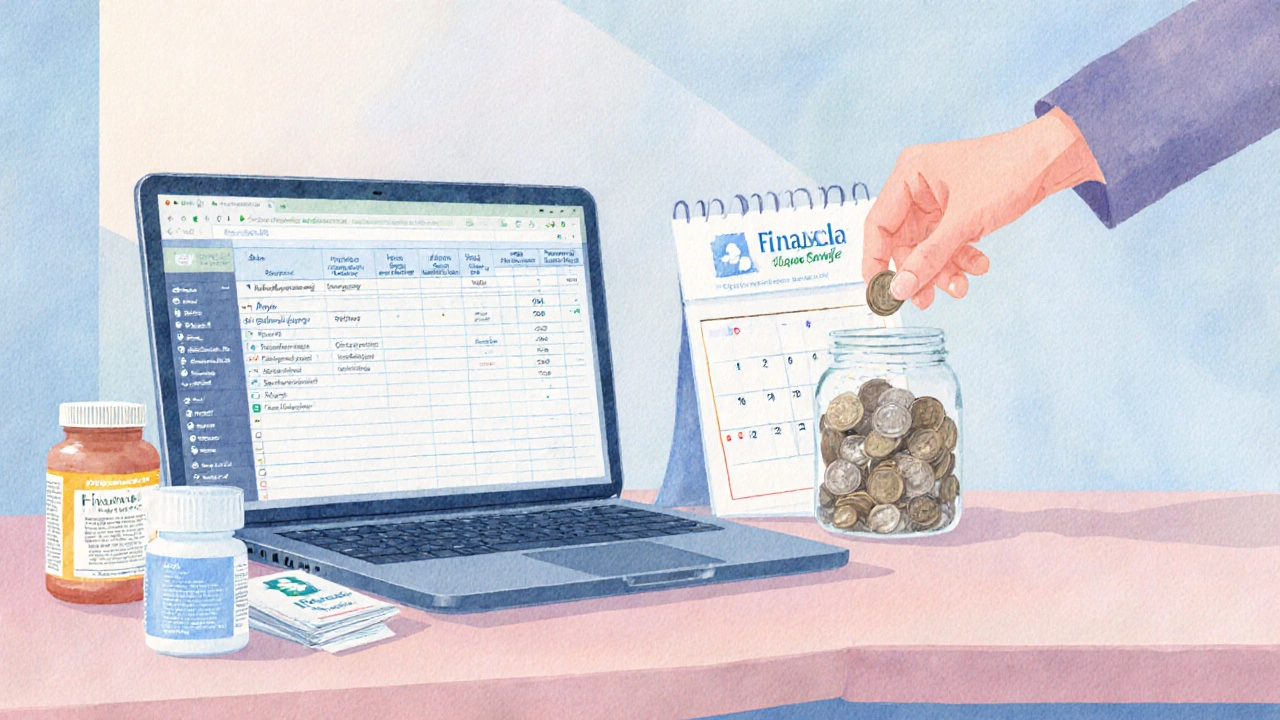Did you know a single IVF cycle can cost anywhere from US$8,000 to US$15,000 in South Africa, and many couples need more than one attempt? When the dream of a family collides with sky‑high medical bills, the stress can feel overwhelming. This guide breaks down every major expense, shows where money can be saved, and gives you a step‑by‑step plan to keep your finances on track while you pursue treatment.
Key Takeaways
- Average costs: IVF≈US$12,000 per cycle; IUI≈US$2,000 per cycle; medication can add US$3,000-5,000.
- Insurance rarely covers full fertility care in South Africa; know the exact policy limits.
- Build a treatment budget using a realistic success‑rate estimate and a 3‑cycle buffer.
- Consider HSA‑style medical savings, low‑interest medical loans, and employer‑based fertility benefits.
- Tax deductions for medical expenses can offset up to 30% of out‑of‑pocket costs if you itemise.
Understanding the Real Cost of Fertility Care
When you hear the term fertility treatment is any medical intervention designed to help individuals or couples conceive, ranging from medication to assisted reproductive technologies, the price tag often surprises even well‑informed patients. Below is a typical cost breakdown for the most common procedures in South Africa (2025 figures):
- Initial consultation and diagnostic work‑up - US$200‑$500.
- Ovulation induction medication - US$1,000‑$2,500 per cycle.
- Intrauterine insemination (IUI is a minimally invasive procedure that places prepared sperm directly into the uterus around ovulation) - US$1,800‑$2,500 per attempt.
- In vitro fertilization (IVF is a multi‑step process that fertilises eggs outside the body and transfers embryos back into the uterus) - US$8,000‑$15,000 per cycle, excluding medication.
- Egg or sperm donation - US$3,000‑$7,000 per donor, plus legal fees.
- Embryo freezing and storage - US$500‑$800 per year.
Success rates matter, too. The latest South African IVF registry shows a 30% live‑birth rate per fresh cycle for women under 35, dropping to 10‑15% for those over 40. The more cycles you plan for, the larger the total cost.
Building a Realistic Treatment Budget
Start with a clear financial picture. Create a spreadsheet that captures three columns: Expected Cost, Success‑Rate Adjustment, and Personal Savings Target.
- List every line‑item from the cost breakdown above.
- Apply a success‑rate multiplier (e.g., 1.3 for a 30% chance per IVF cycle) to estimate how many cycles you might need.
- Add a 10% contingency for unexpected lab fees or medication dose changes.
Example for a 35‑year‑old couple opting for IVF:
- Base IVF cycle: US$12,000
- Medication: US$3,500
- Average cycles needed (30% success): 1 ÷ 0.30 ≈ 3.3 → round up to 4 cycles
- Total projected cost: (US$12,000 + US$3,500) × 4 = US$62,000
- Contingency (10%): US$6,200
- Grand total: US$68,200
Having a concrete number makes it easier to discuss financing with a partner, family, or financial adviser.
Insurance Coverage and What’s Actually Covered
Most South African medical aid schemes offer limited or no coverage for assisted reproduction. However, a few high‑tier plans include a specific “fertility benefit” that may cover up to 50% of IVF costs after a deductible.
To avoid nasty surprises, request a written benefit summary that answers these questions:
- Which procedures are covered (IUI, IVF, embryo storage)?
- Is there a per‑year or lifetime cap?
- Do you need pre‑authorisation from a specialist?
- Are medications covered, or only the procedural fees?
If your policy falls short, consider a supplemental “fertility rider” - an optional add‑on that can increase coverage by 20‑30% for an extra premium.

Financing Options: Loans, Savings, and Employer Benefits
When cash on hand isn’t enough, there are several financing paths that keep interest costs low.
- Medical loan is a low‑interest personal loan earmarked for healthcare expenses, usually offered by banks or credit unions. In 2025, South African banks average 6% APR for loans up to US$70,000.
- Health Savings Account (HSA) is a tax‑advantaged savings vehicle that lets you set aside pre‑tax dollars for qualified medical costs. While South Africa doesn’t have a formal HSA, many employers provide “medical cash plans” with similar tax benefits.
- Employer‑based fertility assistance - some large companies partner with clinics to offer discounted rates or direct subsidies. Ask HR about “employee fertility benefits”.
- Low‑interest credit cards - use only if you can pay off the balance within 12 months to avoid steep interest.
Before signing any loan, compare the Annual Percentage Rate (APR), repayment term, and any processing fees. A simple spreadsheet can show how a 5‑year loan at 6% compares with paying out of pocket over the same period.
Tax Strategies to Lighten the Load
Medical expenses that exceed 7.5% of your taxable income are eligible for itemised deductions on your South African tax return. Keep every receipt-from clinic invoices to pharmacy bills.
Here’s a quick calculation:
- Annual taxable income: US$90,000
- 7.5% threshold: US$6,750
- Total qualified medical expenses in the year: US$12,000
- Deductible amount: US$12,000 - US$6,750 = US$5,250
- Assuming a marginal tax rate of 28%, you could save roughly US$1,470.
Consult a tax professional to ensure you meet the documentation standards and to explore any newly introduced “fertility tax credits”.
Cost‑Cutting Tips Without Compromising Success
Every dollar saved can be redirected toward an extra cycle. Consider these proven tactics:
- Choose a clinic that publishes transparent, itemised pricing (no hidden lab fees).
- Ask about “batch‑testing” of embryos, which can lower per‑embryo costs.
- Look for medication discount programs-many pharmaceutical companies offer 10‑20% rebates for fertility drugs.
- Share donor eggs or sperm through reputable donor banks that offer lower fees for multiple recipients.
- Schedule treatments during off‑peak months; some clinics lower fees in winter.

Timeline Planning: Aligning Money and Medical Milestones
A realistic timeline helps you sync savings with clinic availability. Follow this three‑phase roadmap:
- Preparation (0‑3 months): Complete diagnostics, review insurance, and start a dedicated savings account.
- Financing (3‑6 months): Secure any loans, confirm employer benefits, and lock in medication discounts.
- Treatment (6‑12 months): Begin the first IVF cycle. After each attempt, revisit the budget, adjust the success‑rate estimate, and decide on the next step.
Stick to the schedule, but remain flexible-unexpected lab results or medication side effects can shift dates.
Quick Checklist Before You Sign the Consent Form
- Have you obtained a written cost estimate that includes all labs, medication, and anesthesia?
- Did you verify what your insurance or employer will actually pay?
- Is there a contingency fund covering at least 10% of the total projected expense?
- Do you have a financing plan (loan, HSA, or employer subsidy) in place?
- Are all receipts being saved for tax deductions?
| Aspect | IVF | IUI |
|---|---|---|
| Typical per‑cycle cost (US$) | 12,000 - 15,000 | 1,800 - 2,500 |
| Medication cost | 3,000 - 5,000 | 500 - 1,200 |
| Success rate (women < 35) | ≈30% live birth | ≈10% live birth |
| Number of cycles needed (average) | 3‑4 | 5‑7 |
| Average total out‑of‑pocket (3 cycles) | ~45,000 | ~9,000 |
Frequently Asked Questions
Can I use my medical aid to cover IVF costs?
Only a few high‑tier medical aid schemes in South Africa provide a partial IVF benefit, usually after a deductible and with a cap of around US$6,000 per year. Review your policy’s Schedule of Benefits and ask for a written confirmation before starting treatment.
What financing options are safest for fertility expenses?
A low‑interest medical loan or a pre‑tax medical savings plan (if offered by your employer) are usually the cheapest routes. Credit cards should be a last resort because they can carry rates above 20% if not paid off quickly.
How much can I deduct on my tax return for fertility treatment?
If your total qualified medical expenses exceed 7.5% of your taxable income, the amount above that threshold can be deducted. For a taxable income of US$90,000 and US$12,000 in fertility costs, you could claim roughly US$5,250, saving about US$1,500 at a 28% marginal tax rate.
Are there any government subsidies for fertility treatment?
South Africa does not currently offer a national subsidy for IVF or IUI. Some provinces provide limited grants for specific conditions, but these are rare. Keep an eye on policy changes, as the health ministry is reviewing fertility aid proposals for 2026.
What’s the best way to keep track of all receipts for tax purposes?
Use a dedicated folder-physical or digital. Scan each receipt, rename it with the date and expense type (e.g., "2025-03-12_IVF_Medication.pdf"), and store it in a cloud drive that you can access when filing your return.
Financial planning for fertility isn’t just about numbers; it’s about protecting your hope of becoming a parent. By understanding costs, leveraging insurance and financing tools, and keeping meticulous records, you can focus on the journey ahead instead of watching the budget bleed.


Christopher Jimenez
October 13, 2025 AT 00:41While the guide lists average IVF costs, it conveniently omits the hidden fees that many clinics in South Africa impose, such as embryo handling surcharges and lab overtime charges. Those line items can inflate a supposedly $12,000 cycle to well beyond $20,000. Moreover, the success‑rate multiplier suggested is a simplistic arithmetic trick that ignores age‑related decline. Anyone truly planning finances should consult a specialist accountant rather than rely on a generic spreadsheet.
Olivia Christensen
October 22, 2025 AT 12:41I totally get how overwhelming those hidden fees can feel 😌. It helps to ask the clinic for a fully itemised quote before signing anything, so you know exactly where every dollar goes. Also, keep a running log of all receipts-you’ll thank yourself when tax season arrives. A supportive partner can make the budgeting process feel less like a solo mission.
Lauren W
November 1, 2025 AT 00:41One must question the premise of reducing fertility to a mere spreadsheet; the emotional toll is far more complex!!! The guide's focus on cost‑cutting overlooks the ethical dimensions of donor selection and the psychological impact of repeated cycles!!!
Crystal Doofenschmirtz
November 10, 2025 AT 12:41Could you clarify whether the medication cost estimates include both gonadotropins and the ancillary supplements? Also, does the “contingency fund” recommendation assume a fixed 10 % of total projected expense, or should it be adjusted per cycle?
Pankaj Kumar
November 20, 2025 AT 00:41Great questions! The medication line usually bundles the primary gonadotropins-like FSH and LH-with any needed adjuvant drugs, so you should ask the pharmacy for a detailed breakdown. As for the contingency, think of it as a safety net that grows with each cycle; a dynamic 10 % of the running total works well, especially if you anticipate price fluctuations in lab services.
Harshitha Uppada
November 29, 2025 AT 12:41i dont think u need a 10% fund it’s just nonsense.